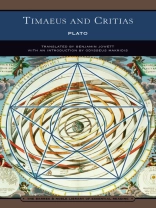Plato’s ambitious dialogue
Timaeus and the unfinished
Critias were meant to be part of a trilogy that would outline a proper and sufficiently detailed natural philosophy and cosmology. The
Timaeus is Plato’s spirited response to the cosmogony and physics of the “atheist” Atomist philosophers Leucippus and Democritus. The
Critias presents what might be a famous Platonic fiction: the story of Atlantis, recounted as a moral metaphor for the cycles of human history. In Plato’s philosophy, history and nature are both governed by the order that Reason imposes on an initially chaotic and recalcitrant material universe. Both natural philosophy and philosophic history are, in this view, imbued with rational meaning; the serious reader is expected to gain a proper understanding of moral values in addition to grasping the mechanisms of the material universe and human history. Conversely, according to Plato, the failure to study philosophy properly is dangerous for morality and would allow the ordered to return to chaos.
लेखक के बारे में
The history of Western philosophy can be recast as a series of footnotes to
Plato’s work, according to some. Plato (427–347 BCE) was born into an aristocratic family of Athens and was destined for an ambitious political career. As an obscure and reticent youngster, he followed Socrates. A sworn enemy of the materialist and relativistic philosophers of his times, Plato transcended his early debt to Socratic views and developed his own transcendentalist mystical theory of Forms.












